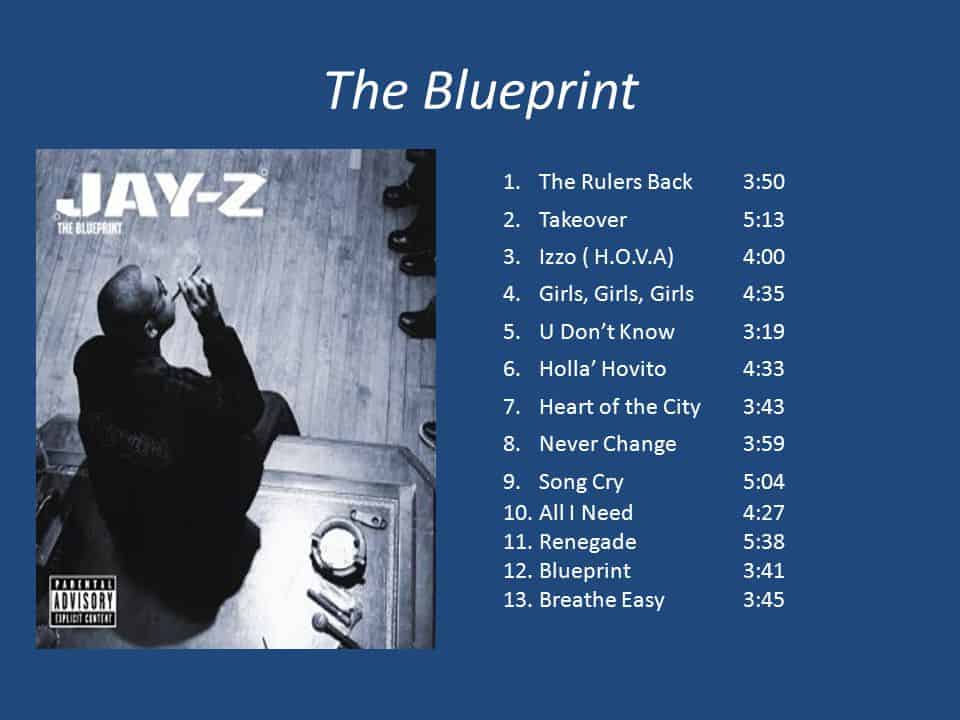

The production lineup for The Blueprint is one of the first things that set it apart from other Jay-Z albums. An album like this, by a rapper at the top of pyramid in terms of record sales, was very much an anomaly back in 2001. He sounded like a rapper who, now that he had found commercial success, had decided to make an album that was not explicitly commercial. He wasn’t enlisting the hot producer of the minute. It didn’t sound like Jay-Z was watering down his style and sound in order to broaden his fanbase. What made The Blueprint different relative to Jay-Z’s past albums, not to mention albums by other multi-platinum rappers, is that it didn’t sound like it was “designed” to sell millions of records. And it eschewed the strategy that had worked so well for him in the past. It’s an upper-echelon album recorded by an artist at the height of his success that works masterfully on a lyrical and musical level. It’s also one of the best albums recorded during the ’00s, across hip-hop and other genres. It was a commercial and critical success. However, on the infamous morning of September 11, 2001, he released The Blueprint. Peers like Nas, Snoop Dogg, Mase, and Cam’Ron all followed this path, to varying degrees of financial success. And in fairness, it wasn’t like Jay-Z was the only rapper that spent the late ‘90s going this route. His third, In My Lifetime: Vol 2, went five times platinum. Among his first five albums, two went platinum and his other three went multi-platinum. Sales-wise, the strategy very much worked for Jigga. It seemed he was going the route that Puff Daddy famously laid out for Biggie: create hype with poppy tracks with recognizable samples and catchy hooks, while the lyrical and musical red meat was to be found on the album tracks. After his friend and rhyme partner/peer Biggie’s tragic death in 1997, Jay-Z slid into the Notorious One’s role as “King of New York,” the vanguard of New York hip-hop.īut with his early albums that he released himself, there was always the sense that he wasn’t living up to his potential. He’d displayed his skills with guest appearances on Jaz’s “The Originator” and “It’s That Simple” to Original Flavor’s “Can I Get Open?” to Big Daddy Kane’s “Show & Prove.” He eventually teamed up with Damon Dash and Kareem “Biggs” Burke to create Roc-A-Fella Records, and starting with his debut album Reasonable Doubt, released in 1996, ascended to heights of fame seldom seen in hip-hop. Jay-Z had never been a slouch on the mic. Jay-Z, first made a name for himself during this mid ’90s environment. Rap videos were getting regular run on MTV, rather than isolated to Yo! MTV Raps. Rap tracks were being played on mainstream radio during the daytime. Suddenly, the idea of rappers making music designed to sell millions didn’t seem that weird anymore. But slowly, as Bad Boy and Death Row exploded onto the scene, the template for the commercially successful rapper shifted from Young MC and Vanilla Ice to Snoop Doggy Dogg and Biggie Smalls. This tenet held through the mid ’90s, at least partially because “pop” friendly rappers were viewed as less-than-skilled cornballs. And one of the things that “No Sell Out” entailed was that rappers didn’t compromise their music for the sake of sales. The concept of “No Sell Out” was built into rap music’s DNA. In its early days, the idea of a rapper making an album was completely alien to hip-hop, much less a rapper making an album that was designed to sell millions of records.

It’s become a quaint idea to many that during the ’80s and ’90s, rappers that sold lots of records were often considered less than “real.” At its core, hip-hop is a culture built on being everything that other genres of music are not. There has long been a complicated relationship between hip-hop and commercial success. Happy 20th Anniversary to Jay Z’s sixth studio album The Blueprint, originally released September 11, 2001.


 0 kommentar(er)
0 kommentar(er)
